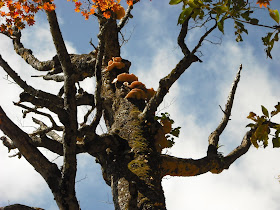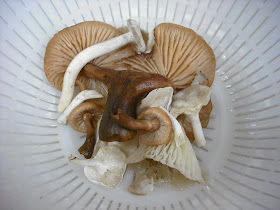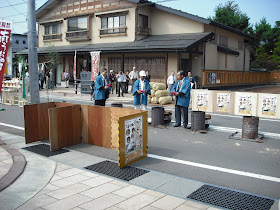日本には二種類のrolled omelet(巻いたオムレツ)があります。関東の甘い「厚焼き玉子」と関西の、あまり甘くない、名前の通り出汁が入った「だし巻き卵」です。私は、関東の人間なので、厚焼き玉子は知っていますが、だし巻き卵は知りません。
As I said previously, I hate sweet atsuyaki tamago, and I hardly ever put sugar in my atsuyaki tamago.
以前言った通り、私は甘い厚焼き玉子が嫌いで、自分で作る厚焼き玉子に砂糖を入れることは殆どありません。
This is a very rare version of my atsuyaki tamago that contains 1 tbsp of sugar.
この厚焼き玉子は、砂糖を大さじ1入れた、私としてはとても珍しい厚焼き玉子です。
First one-third of the beaten eggs:
といた卵の最初の1/3:

Rolling completed:
巻き終わった状態:

Second one-third of the eggs:
2回目の1/3:

Third (last) one-third of the eggs:
3回目(最後の)1/3

Most recipes say to wrap the atsuyaki tamago in a bamboo mat (makisu), but I like to use a paper towel:
大抵のレシピーには、厚焼き玉子を巻き簾(まきす)で巻くよう書いてありますが、私はキッチンペーパーを使うのが好きです。

After taking this photo, I had one slice. Not bad, but I prefer unsweetened atsuyaki tamago.
この写真を撮った後に一つ食べました。悪くはないですが、甘くしない厚焼き玉子のほうが好きです。

"Why did you make sweet atsuyaki tamago in the first place then," you might ask. My daughter said she wanted to have sweet atsuyaki tamago one day.
「じゃあ、何で甘い厚焼き玉子を作ったんだ」って言われそうですが、ある時、娘が甘い厚焼き玉子を食べたいって言ったんです。
Now I'm very glad that both my children say that they prefer unsweetened atsuyaki tamago!
子供たち二人とも、甘くしない厚焼き玉子のほうが好きと言ってくれてとても嬉しいです!













































